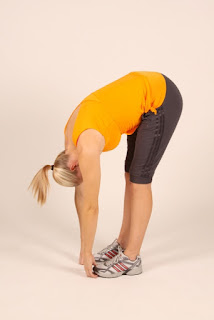What is Physical or Chemical-free Sunscreen?
Those of you that know me personally know I’ve got my dad’s wrinkly Irish skin. Yowsers! I look older than all of my friends and older than my husband (who is actually 4 years older than me!)
Not only do we want to protect our skin for beauty reasons but also to protect our health. Personally I’ve already had 2 skin cancer surgeries and honestly I never was a big tanner.
Just recently my doctor reminded me how important it is to wear sunscreen every single day. Applying sunscreen each morning should be a part of my morning ritual just like brushing my teeth.
Many of us think of applying sunscreen if we are spending the day at the beach or at a sunny ballpark but in reality the majority of our sun exposure comes during regular daily activities such as driving, walking to and from stores or businesses, short walks etc. In fact I’ve noticed that my ugly Irish wrinkles are much more pronounced on the left side of my face. I assume this is due to the exposure I get through my (as heavily tinted as is legally allowed) car window while driving. Yes our skin needs to be protected EVERY day.
The latest advice from skin specialists suggests that you seek a natural barrier rather that chemical sunscreen. These sunscreens use Zinc oxide and titanium dioxide as "mineral sunscreens" or "physical blockers" . They reflect and scatter UV rays.
What are the Advantages of Chemical-free Sunscreens?
These Chemical Free Barrier sunscreens have the advantage of immediately starting to protect when you put them on. (In contrast, chemical products need to be put on 30 minutes in advance to give the skin the time to absorb them.)
Another significant advantage is that any sunscreen which contains the physical blocker zinc oxide or titanium dioxide will protect against both UVA and UVB rays.
Also studies show that unlike other common sunscreen chemicals, little to no zinc and titanium get absorbed through the skin, and they provide stable UVA protection relative to the other ingredients.
(However, zinc and titanium in spray or powder sunscreens are not recommended, since inhalation of zinc and titanium particles is a concern.)
Check here for a list of some of the best barrier sunscreens, lip balms and moisturisers.
http://breakingnews.ewg.org/2011sunscreen/sunscreens-exposed/sunscreen-and-skin-cancer/
How Sunscreen Should be Applied?
To make sure that you get the full SPF protection of a sunscreen, you need to apply 1 oz - about a shot glass full. Put on a thick layer of sunscreen and make sure every part of your body that will be exposed gets good cover. Pay attention to the areas that can easily get burned like the ears, nose, back of the neck, and shoulders.
During a long day at the beach, don't forget to reapply at least every 2 hours and immediately after swimming, toweling off, or sweating.
Q. Who needs sunscreen?
• Everyone. People of all skin colors get skin cancer. More than 3.5 million skin cancers in more than 2 million people are diagnosed annually.1
• Many of these skin cancers could have been prevented with protection from the sun’s rays.
Q. When should I use sunscreen?
• Every day. The sun emits harmful ultraviolet (UV) rays year round.
• Even on cloudy days, harmful UV rays can penetrate your skin.
◦ On a cloudy day, up to 80 percent of the sun’s UV rays can pass through the clouds.
• Snow and sand increase the need for sunscreen.
◦ Snow reflects 80 percent of the sun’s rays, and sand reflects 25 percent of the sun’s rays.2
Q. Can I use the sunscreen I bought last summer, or do I need to purchase a new bottle each year? Does it lose its strength?
• Dermatologists recommend using sunscreen every day, not just during the summer. If you are using sunscreen every day and in the correct amount, a bottle should not last long. If you find a bottle of sunscreen that you have not used for some time, here are some guidelines you can follow:
◦ The FDA requires that all sunscreens retain their original strength for at least three years.
◦ Some sunscreens include an expiration date. If the expiration date has passed, throw out the sunscreen.
◦ If you buy a sunscreen that does not have an expiration date, write the date you bought the sunscreen on the bottle. That way you’ll know when to throw it out.
◦ You also can look for visible signs that the sunscreen may no longer be good. Any obvious changes in the color or consistency of the product mean it’s time to purchase a new bottle.
• WARNINGS:
• The United States Department of Health & Human Services and the World Health Organization’s International Agency of Research on Cancer have declared ultraviolet (UV) radiation from the sun and artificial sources, such as tanning beds and sun lamps, as a known carcinogen (cancer-causing substance).4
• There is no safe way to tan. Every time you tan, you damage your skin. As this damage builds, you speed up the aging of your skin and increase your risk for all types of skin cancer.
Q. Is sunscreen all I need to protect myself from the sun?
• Sunscreen plays an important role in protecting your skin from the sun, but it does not offer complete protection. To protect your skin and find skin cancer early, dermatologists recommend the following:
◦ Generously apply a barrier sunscreen to all exposed skin. Re-apply approximately every two hours, even on cloudy days, and after swimming or sweating.
◦ Wear protective clothing, such as a long-sleeved shirt, pants, a wide-brimmed hat and sunglasses, where possible.
◦ Seek shade when appropriate, remembering that the sun’s rays are strongest between 10 a.m. and 4 p.m. If your shadow is shorter than you are, seek shade.5
◦ Use extra caution near water, snow and sand as they reflect the damaging rays of the sun, which can increase your chance of sunburn.
◦ Get vitamin D safely through a healthy diet that may include vitamin supplements. Don’t seek the sun.6
◦ Avoid tanning beds. Ultraviolet light from the sun and tanning beds can cause skin cancer and wrinkling. If you want to look tan, consider using a self-tanning product, but continue to use sunscreen with it.
◦ Check your birthday suit on your birthday. If you notice anything changing, growing, or bleeding on your skin, see a dermatologist. Skin cancer is very treatable when caught early.
YOU GUESSED IT YOUR HEALTHY LIVING CHALLENGE FOR THE WEEK IS TO:
1. CLEAN OUT YOUR SUNSCREEN. DISPOSE OF ANY OUT OF DATE BOTTLES AND TUBES.
2. SOMETIME THIS WEEK PURCHASE YOURSELF A BOTTLE OF HIGH QUALITY BARRIER SUNSCREEN OR DAILY MOISTURISER
3. FOR EVERY DAY YOU WEAR SOME TYPE OF SUNSCREEN YOU CAN AWARD YOURSELF 5 POINTS
* No points for this but if you have not had your skin checked by a dermatologist in the last year it would be wise to make yourself an appointment! You’ve only got one SKIN!
 There are many things we can measure and track in our efforts to be healthy, happy people. Besides just tracking our total calories each day, we can also track fiber grams, carbohydrate intake, sodium levels or iron and other specifics.
There are many things we can measure and track in our efforts to be healthy, happy people. Besides just tracking our total calories each day, we can also track fiber grams, carbohydrate intake, sodium levels or iron and other specifics.

